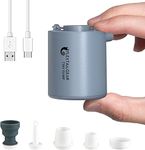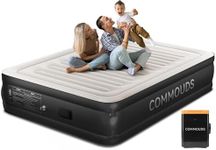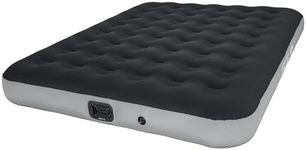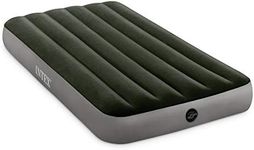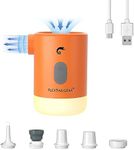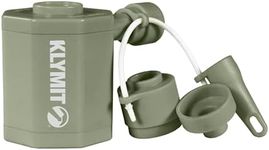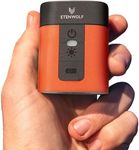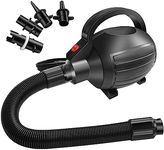Buying Guide for the Best Battery Powered Pumps Air Mattresses
When choosing a battery-powered pump for air mattresses, it's important to consider several key specifications to ensure you get a product that meets your needs. These pumps are designed to inflate and deflate air mattresses quickly and efficiently, making them ideal for camping trips, guest beds, and other temporary sleeping arrangements. Understanding the key specs will help you make an informed decision and select a pump that provides the best performance and convenience for your specific situation.Battery TypeThe battery type refers to the kind of batteries the pump uses. This is important because it affects the pump's portability, runtime, and ease of replacement. Common battery types include AA, AAA, and rechargeable lithium-ion batteries. AA and AAA batteries are widely available and easy to replace, making them convenient for short-term use. Rechargeable lithium-ion batteries, on the other hand, offer longer runtimes and can be recharged multiple times, making them more suitable for frequent use. Consider how often you will use the pump and whether you prefer the convenience of disposable batteries or the long-term cost savings of rechargeable ones.
Inflation/Deflation TimeInflation/deflation time refers to how quickly the pump can inflate or deflate an air mattress. This is important because it affects how long you will need to wait before your mattress is ready for use or storage. Pumps with faster inflation/deflation times are more convenient, especially if you need to set up or pack up quickly. Typically, pumps can be divided into three segments: fast (under 3 minutes), moderate (3-5 minutes), and slow (over 5 minutes). If you often find yourself in a hurry, a pump with a fast inflation/deflation time would be ideal. For occasional use, a moderate or slow pump may be sufficient.
Airflow RateThe airflow rate measures how much air the pump can move per minute, usually expressed in liters per minute (L/min). This spec is important because it directly impacts the inflation/deflation time and the pump's efficiency. Higher airflow rates mean faster inflation and deflation. Airflow rates can be categorized as high (over 400 L/min), medium (200-400 L/min), and low (under 200 L/min). If you have a large air mattress or need to inflate multiple mattresses, a pump with a high airflow rate will save you time and effort. For smaller mattresses or occasional use, a medium or low airflow rate may be adequate.
PortabilityPortability refers to how easy it is to carry and transport the pump. This is important for users who plan to take the pump on camping trips or other outdoor activities. Factors that affect portability include the pump's size, weight, and whether it comes with a carrying case. Smaller, lighter pumps are easier to pack and carry, making them ideal for travel. If you need a pump for home use or occasional trips, portability may be less of a concern. Consider how and where you will use the pump to determine the level of portability you need.
Nozzle AttachmentsNozzle attachments refer to the different types of nozzles that come with the pump, allowing it to fit various valve sizes on air mattresses. This is important because it ensures compatibility with different types of air mattresses and other inflatables. Pumps with multiple nozzle attachments offer greater versatility and can be used with a wider range of products. If you have multiple air mattresses or plan to use the pump for other inflatables like pool toys or inflatable boats, look for a pump with a variety of nozzle attachments. For single-use or specific air mattresses, fewer attachments may be sufficient.
Noise LevelNoise level refers to how loud the pump is when in operation. This is important because a noisy pump can be disruptive, especially in quiet environments like campsites or when inflating a mattress late at night. Noise levels are typically measured in decibels (dB), with lower numbers indicating quieter operation. Pumps can be categorized as quiet (under 60 dB), moderate (60-70 dB), and loud (over 70 dB). If you value a peaceful environment, a quiet pump would be the best choice. For occasional use or in noisier settings, a moderate or loud pump may be acceptable.
